Essential Tips for Photographing Bears in Alaska
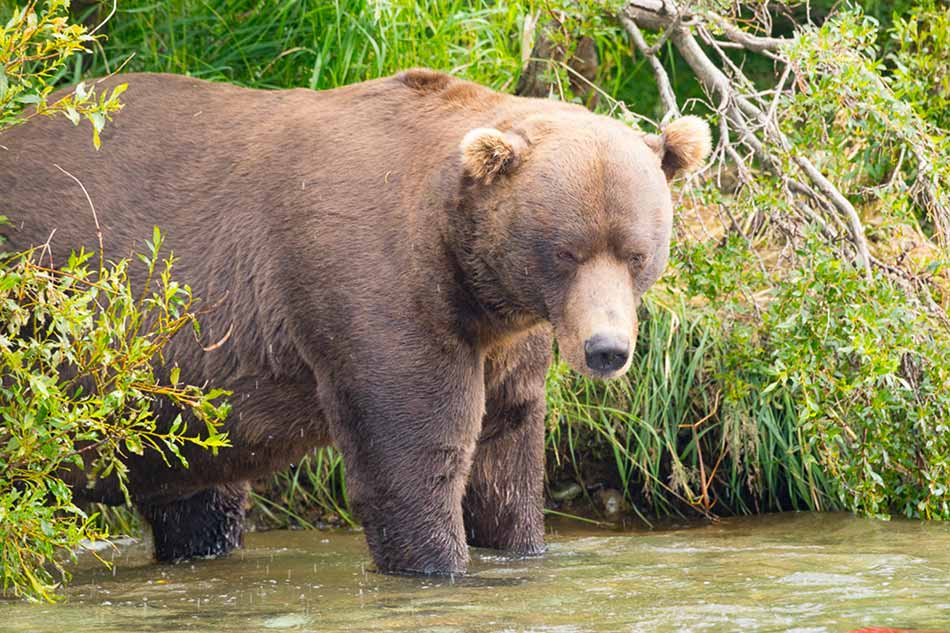
If you've never been to Alaska, you're missing out on a treasure trove of beauty.
I've been several times, and no matter how many times I visit the same places and see the same sights in this beautiful state, I always come away shocked by its magnificent sights.
Of course, Alaska isn't just a hotbed for landscape photography. It also offers abundant opportunities to photograph wildlife as well.
When it comes to Alaska wildlife photography, there are few experiences as exciting as photographing grizzly bears.
Here are a few essential tips to keep in mind when photographing bears in Alaska.
Editor's Note: The images in this article are by our friend John Slonina and are used with permission.
Safety is Priority #1

Close calls with wildlife happen all the time, and unfortunately, it sometimes ends with a photographer or an animal being injured or killed.
When photographing Alaskan grizzly bears, it's important to keep your distance, particularly from mother bears with cubs.
Additionally, having protection from bears is essential, either in the form of bear spray, a firearm, or both.
Venturing out into the Alaskan wilderness on your own is not a good plan, either.
Instead, to photograph bears safely, it's recommended to join a photography tour, that way you not only have safety in numbers, but you also benefit from having an experienced guide that knows the area (and knows the bears, too).
Have Two Cameras at the Ready
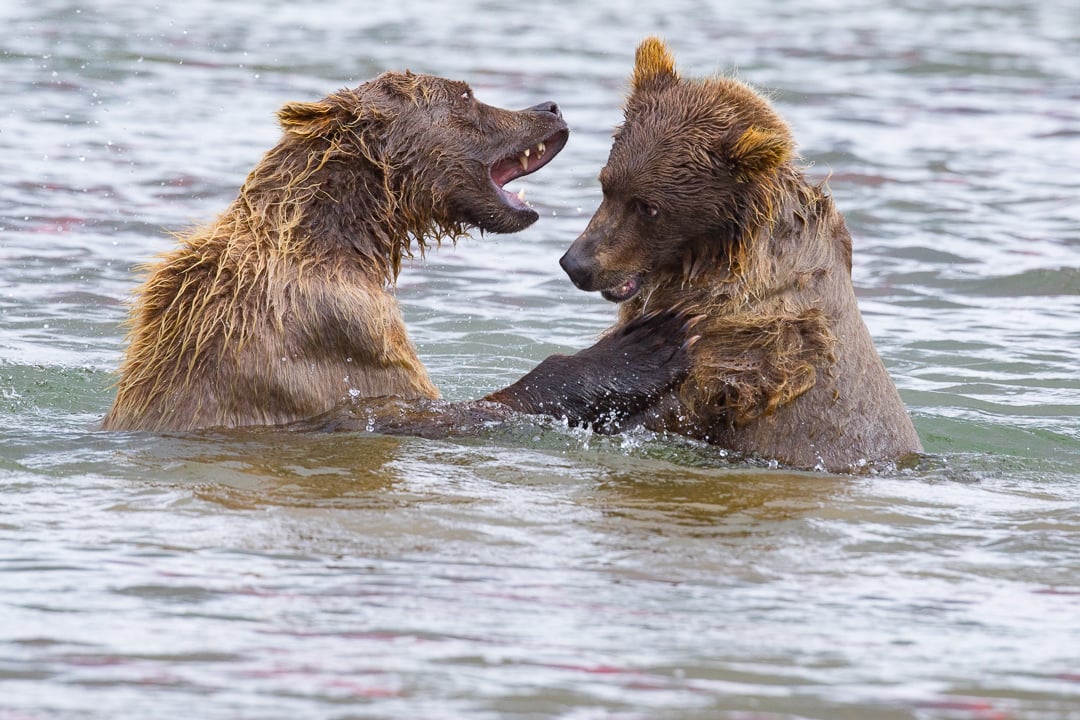
One of the most basic wildlife photography tips is to have two camera bodies, each with a different focal length lens, charged up and ready to go.
By having two bodies, you can shoot wider shots with one for environmental-type portraits of bears and close-up, more intimate shots with a longer lens that shows the detail of these beautiful animals.
This will enable you to get more shots, more quickly. Additionally, without having to constantly change your lenses, you'll be part of the action instead of missing critical shots because you're in the middle of a lens change.
Get on the Bear's Eye Level
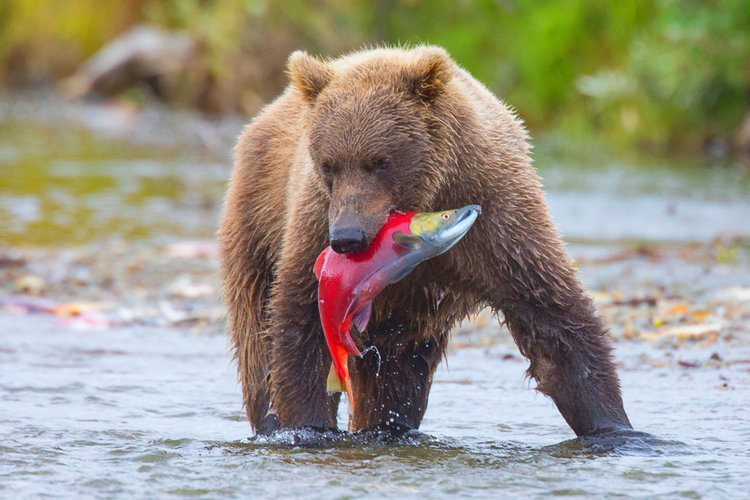
One of the keys to a great photo of a bear is to get on their eye level.
For one, this helps the viewer see the world from the bear's perspective, which, depending on the bear's position (laying down, standing up, etc.) could be much different from what we see from a typical human eye level.
Secondly, getting on the bear's eye level makes the photos you take much more dynamic.
Think about it - if you're photographing a grizzly fishing for salmon, the image will have more impact if you kneel or sit down than if you shoot from a higher perspective, downward towards the bear.
Just like shooting a portrait of a person, by focusing on a bear's eyes from its eye level, you'll end up with a much more satisfying photo.
Keep Up With the Action
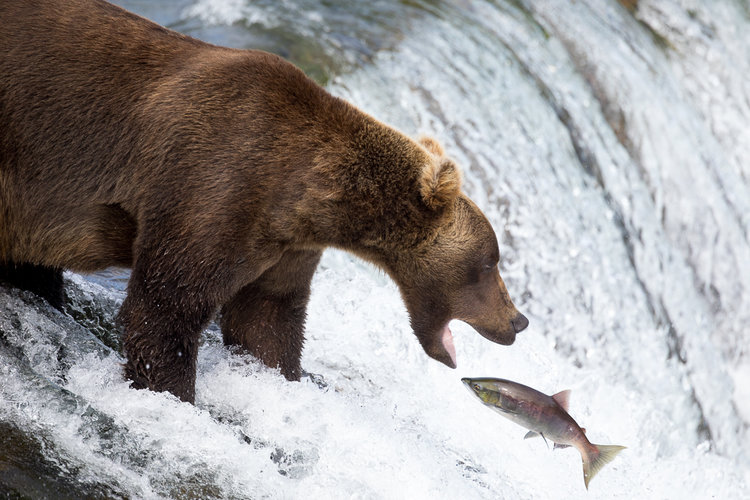
Bears are constantly on the move, and as such, you need to dial in the right camera settings to keep up with all their movement.
That means using continuous autofocus so that your camera is constantly adjusting its focus as the bear moves around.
That also means setting up back-button focusing so that you can use the shutter button to meter and a button on the back of the camera for focusing.
Using a fast shutter speed is critical as well.
Bears might seem like big, slow animals, but that's simply not the case. They can be lightning-quick, so you don't want to end up with blurred motion because your shutter speed is too slow.
Though different situations call for different shutter speeds, 1/500 seconds is usually a good starting point for daytime shooting.
Do Your Homework
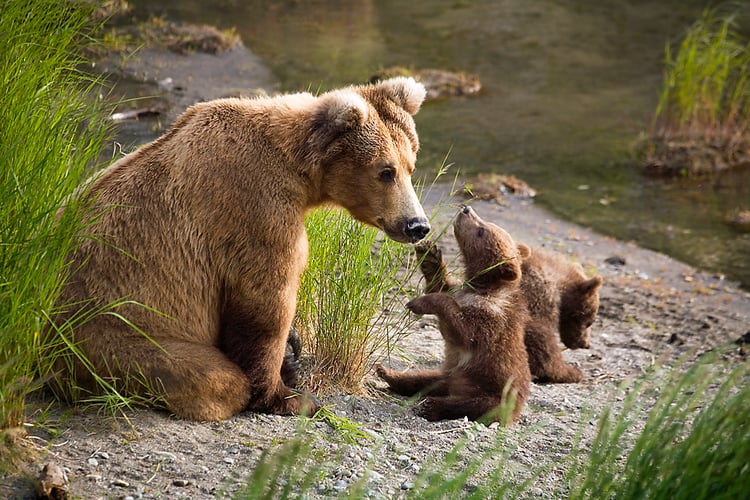
Of course, your success in photographing bears in Alaska begins with doing your homework.
You'll want to research grizzly bears to learn about their habitat, their behavior, their diet, where they live, and so forth.
Additionally, understanding when salmon runs occur, when bear cubs are born and are most active, and how to get to prime bear territory are musts as well.
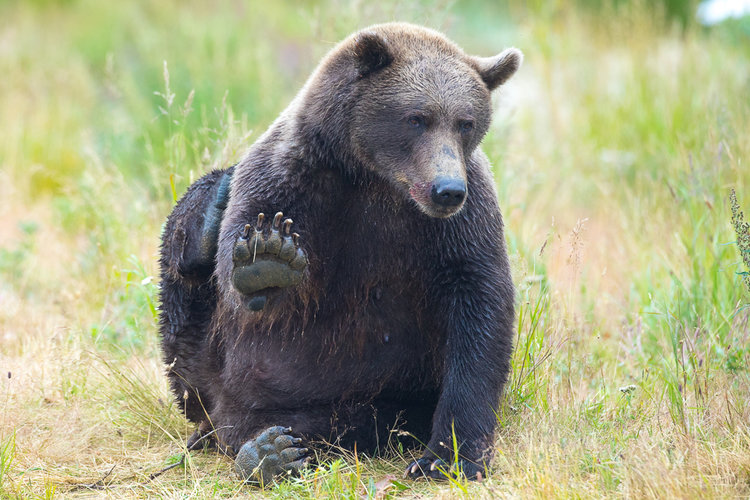
As noted above, though, visiting Alaska to photograph bears is best done not on your own, but as part of a photography tour.
Not only do photo tours take care of the planning aspect of photographing bears, but with seasoned photographers at the helm, you'll also have a chance to learn more about how to photograph bears.
Slonina Photography offers one such bear photography tour.
While there are other tours that focus on photographing grizzlies, what sets Slonina Photography apart is that you travel by floatplane to various locations.
That includes Katmai National Park, which sprawls over four million acres in southern Alaska. It has one of most dense bear populations in the world (about 2,200 at the National Park Service’s last count).
Slonina Photography takes you to several different locations at Katmai. They are not stuck with the same bears and the same background.
Instead, they have the aforementioned planes to take you to different locations, that way every day you can visit different bears with different scenery.
One day you may have a bear on a waterfall, the next day bears fishing in the river with a mountain or glacier in the background. The next day may be bears digging for clams in the ocean. Variety is key with several options to explore at this incredibly beautiful national park.
By monitoring several sites for bear activity, this allows the tour to visit the best places at the best times, that way you get your money's worth when it comes to getting photos of these beautiful animals.
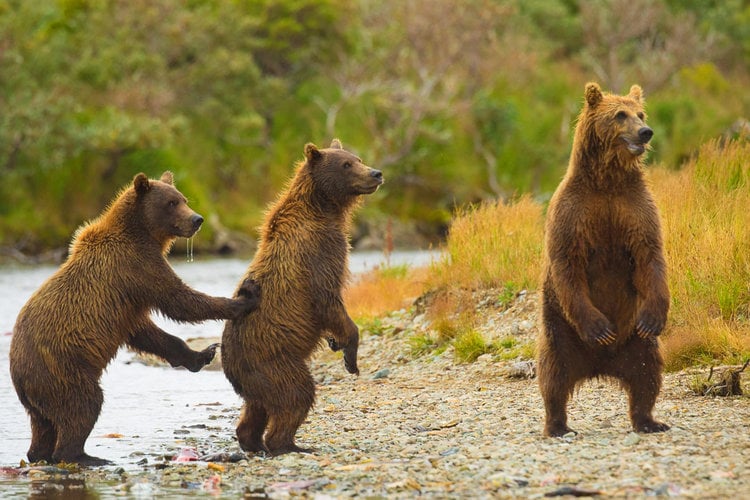
What's more, this tour includes workshop time during which you will learn about bear behavior so you can get high-quality action photos of bears playing, fighting, fishing, and so on.
After each day's adventure, there is downtime at a lakeside lodge where you will learn about post-processing techniques for enhancing your images.
There's also time to share and critique images, thus enhancing the educational component of the trip.
In other words, bear photo tours and workshops like this one offer the full experience, with access to photography experts, bear experts, and seldom-seen bear habitat.
That's why there's only one spot left for the upcoming photo tour August 7-13, 2018!
You can register for the final spot here or get on a waiting list. Another tour is scheduled for July 16-21, 2019.
We Recommend
Surprising Facts About Yellowstone for Photographers
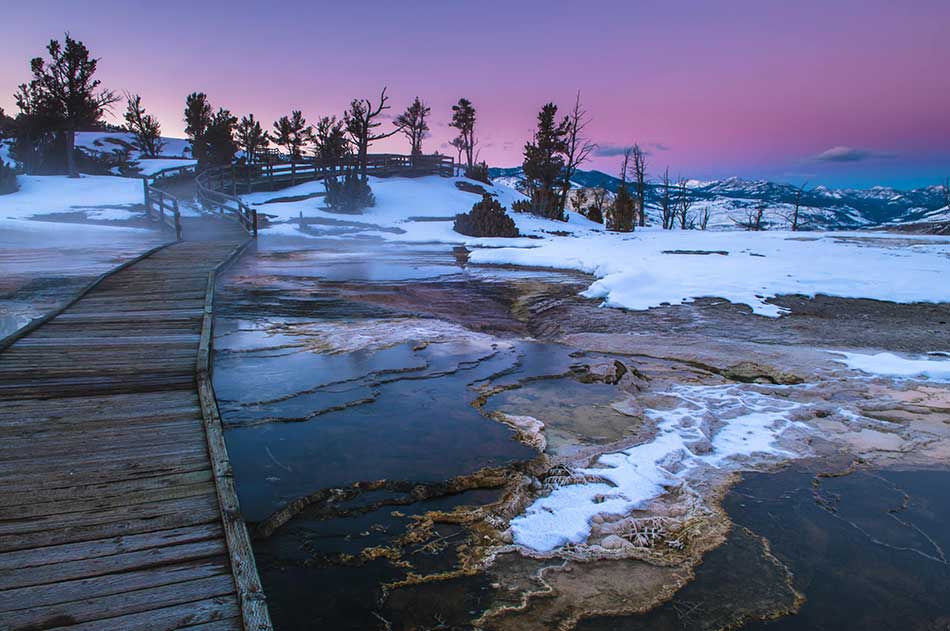
Yellowstone is the world's first national park, and deservedly so.
It's an ecosystem that boasts incredible diversity of wildlife and an equally incredible landscape that ranges from ancient forests to mud pots, geysers to sweeping valleys, and mountain peaks to hot springs.
The park is a mysterious place, too, and that makes it an ideal subject for your camera's lens.
Here's a few surprising facts about Yellowstone that will help you plan your next adventure in this amazing place.
Old Faithful Isn't the Park's Tallest Geyser
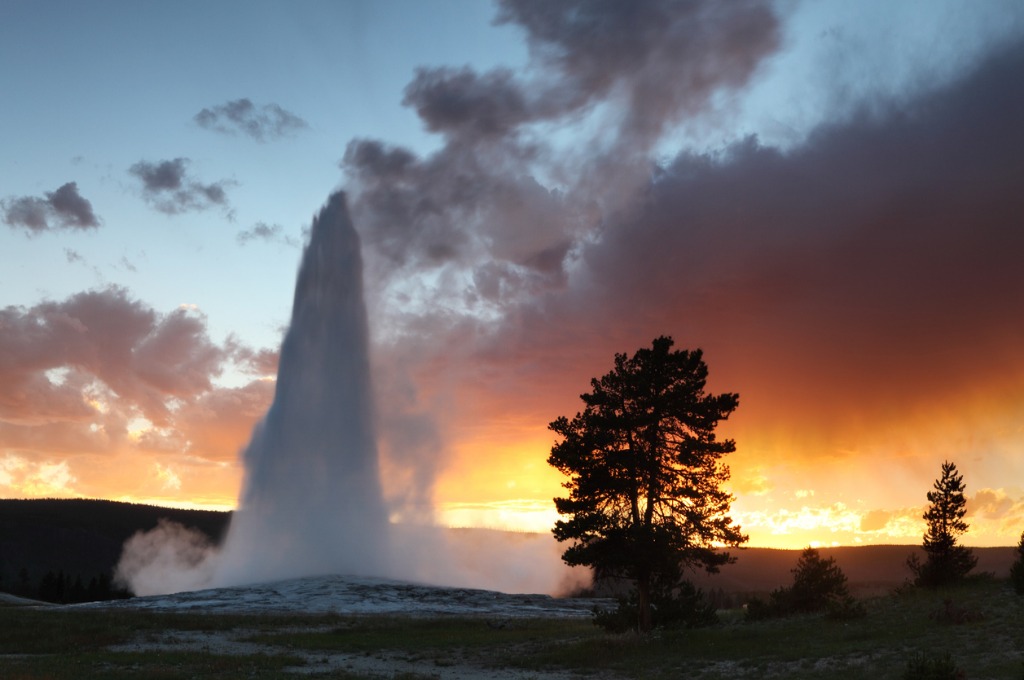
Though Old Faithful is certainly the most famous geyser in Yellowstone (and perhaps the entire world), it isn't the biggest in the park.
That distinction goes to Steamboat Geyser, which can shoot water up to 300 feet in the air - 200 feet higher than a typical Old Faithful eruption.
But the reason why Old Faithful gets so much love is because its eruptions are highly predictable, occurring every 30-120 minutes or so.
Steamboat, on the other hand, is wildly erratic, rarely erupting multiple times in an entire year. Of course, it erupted three times in a little more than a month earlier this year, so that only adds to the mystery and intrigue of when the big geyser will blow its top.
While Steamboat puts on a much more impressive show for photographers, you're better off going with the reliable Old Faithful for your geyser photos.
Bacteria Give Hot Springs Their Spectacular Colors
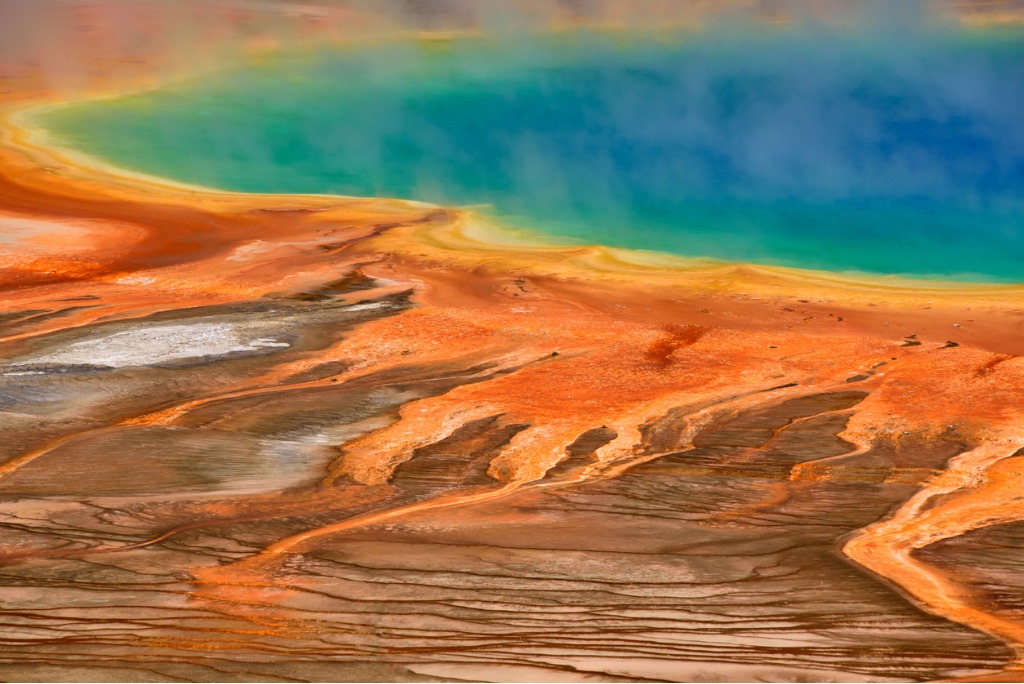
Grand Prismatic Spring should be on your must-photograph list when you head to Yellowstone.
It's a breathtaking sight to see with vibrant colors that look otherworldly.
Those colors are thanks to bacteria that live in the hot pools of water. The sunlight reflects off the different bacteria, lighting up the hot springs in an array of incredible colors.
The different colors in the pools represent different kinds of bacteria that only live in very specific temperature ranges.
Summertime provides the best time for capturing the most intense colors at Grand Prismatic, though it's an impressive sight in winter, too (more on that later).
For the best vantage point, ditch the crowded boardwalks that run around the spring and head for the Fairy Falls Trail, which provides an overlook down onto the basin where the hot spring is located.
Wolves Might Be the Most Important Animal in the Park
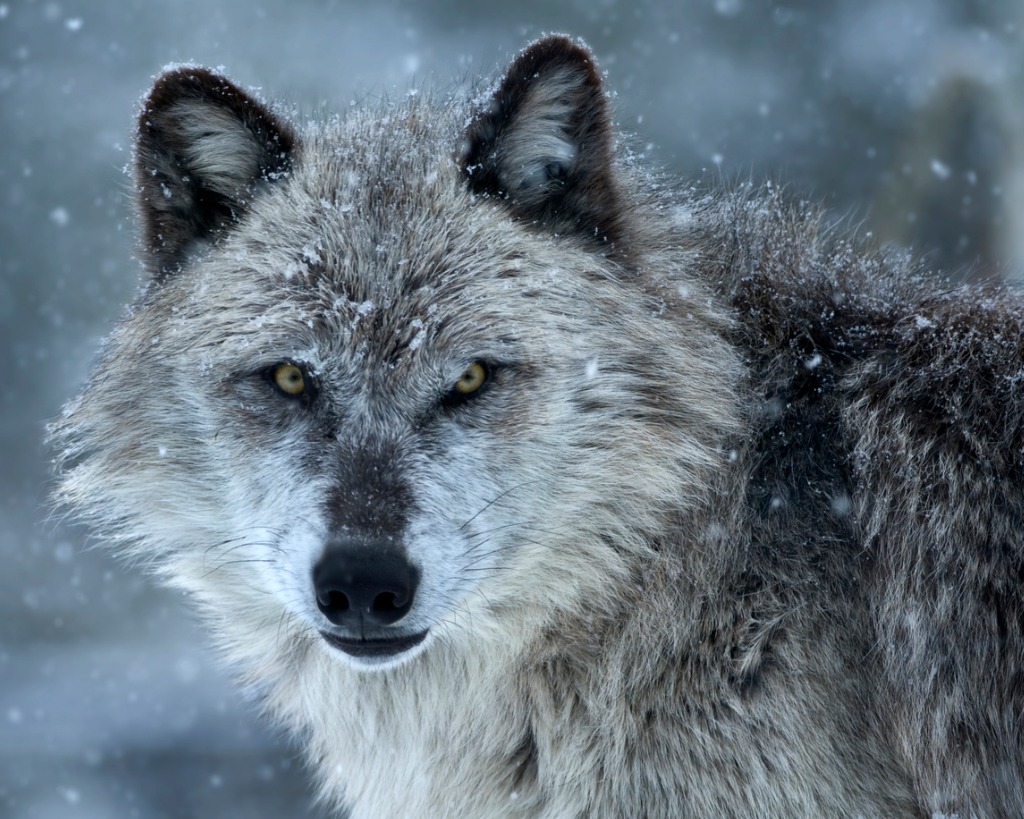
In 1995, wolves were reintroduced into Yellowstone National Park after having been wiped out by government predator control programs in the early 1900s.
The last gray wolf in Yellowstone was killed in 1926, and though some sightings were reported over the years, Yellowstone was essentially without wolves until the re-introduction program began in the mid-1990s.
While there was fierce opposition to wolf reintroduction at the time from some groups, it has proven to be highly beneficial to the park.
There were too many bison and elk in the park, and they had become complacent in the absence of major predators.
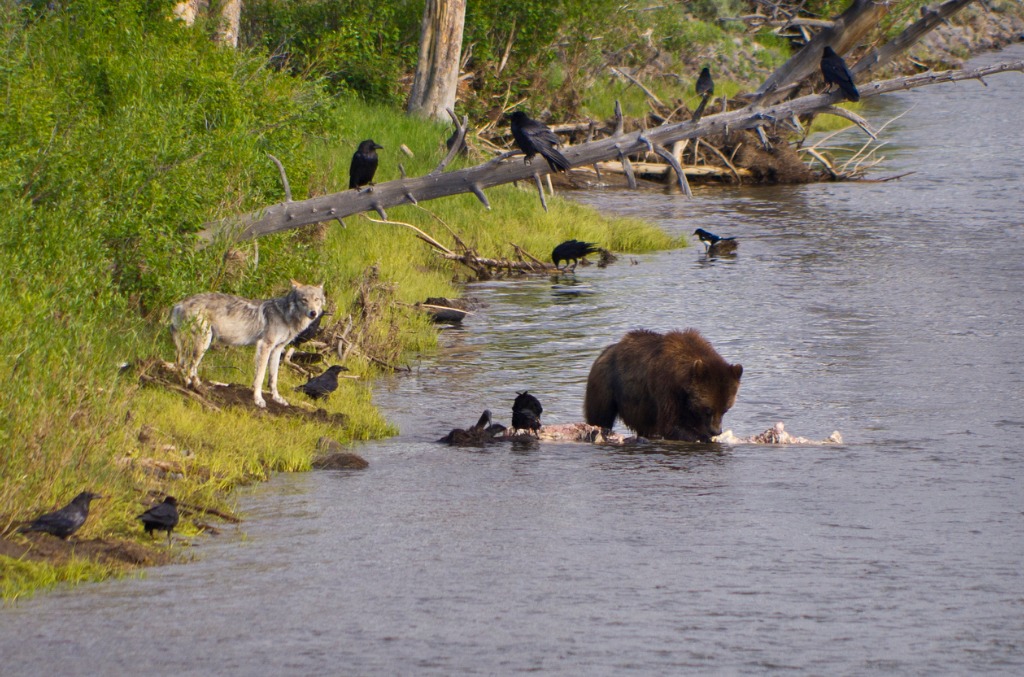
But when wolves rebounded, they found easy kills and brought the ecology of the park back into balance.
Elk and bison returned to healthy numbers. Vegetation along streams - no longer mowed down by overpopulations of elk and bison - also returned to form. Wolves are even credited with helping increase the variety of songbirds in the park.
For photographers, wolves are tough customers as they are very elusive. However, a good wildlife photography tip is to head to Lamar Valley in the northern reaches of the park, where you'll find wide-open valleys with plenty of prey for wolves.
Summer is Not the Best Time to Visit Yellowstone
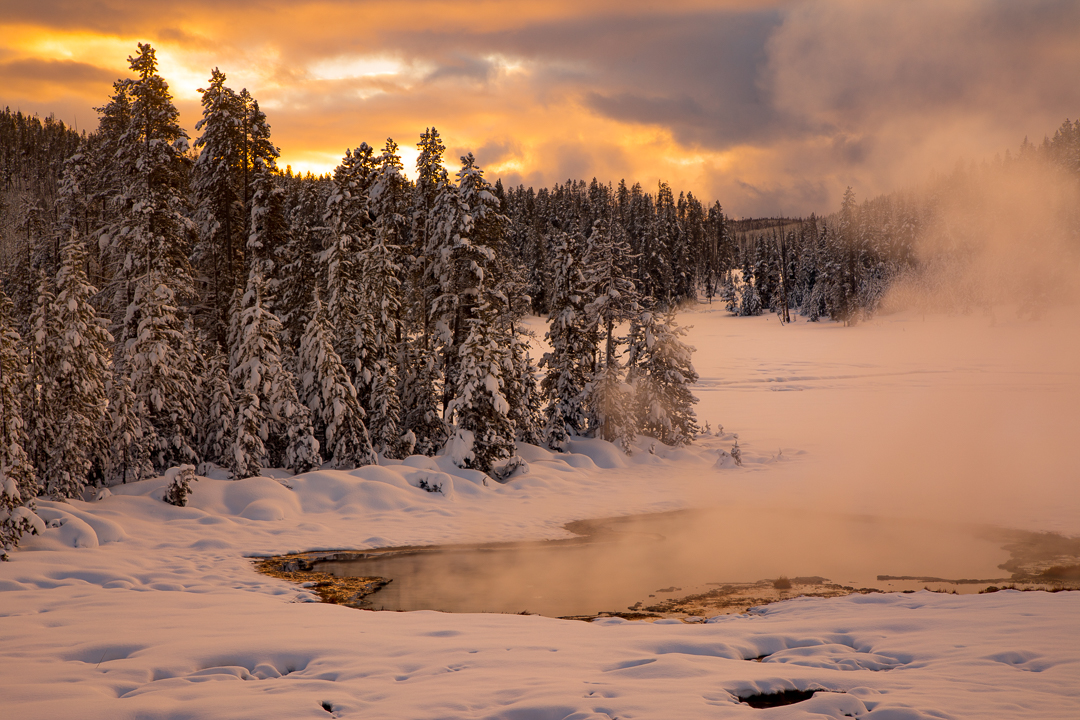 Image Credit: John Slonina
Image Credit: John Slonina
The vast majority of tourists that travel to Yellowstone do so between May and September. That makes for a very busy park with crowded boardwalks, lots of traffic, and not much peace and quiet, unless you park your car and head out on one of the park's many designated trails.
Your other option - and a far better one if you ask me - is to visit Yellowstone in the winter.
Not only will you encounter far fewer people, but the Yellowstone ecosystem is perhaps even more impressive in the dead of winter.
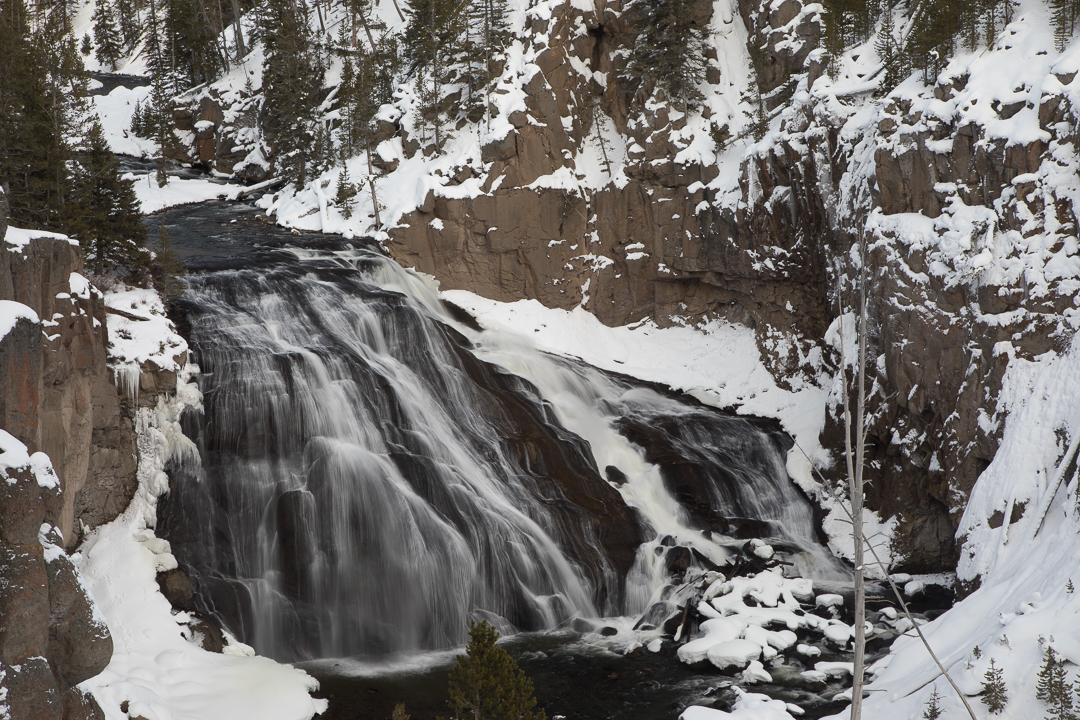 Image Credit: John Slonina
Image Credit: John Slonina
The bubbling mud pots and erupting geysers take on an even more otherworldly appearance in the winter as they're shrouded in an eerie veil of steam.
Waterfalls - some of which flow throughout the winter despite temperatures that can reach -40 degrees Fahrenheit - are lined with giant towers of ice and look like something right out of a fairy tale.
Primary among the must-see waterfalls in winter are the Upper and Lower Falls of the Yellowstone River, located in the Grand Canyon of the Yellowstone.
At 308 feet in height, the Lower Falls is more than twice the height of Niagara Falls and puts on an impressive wintertime show for photographers.
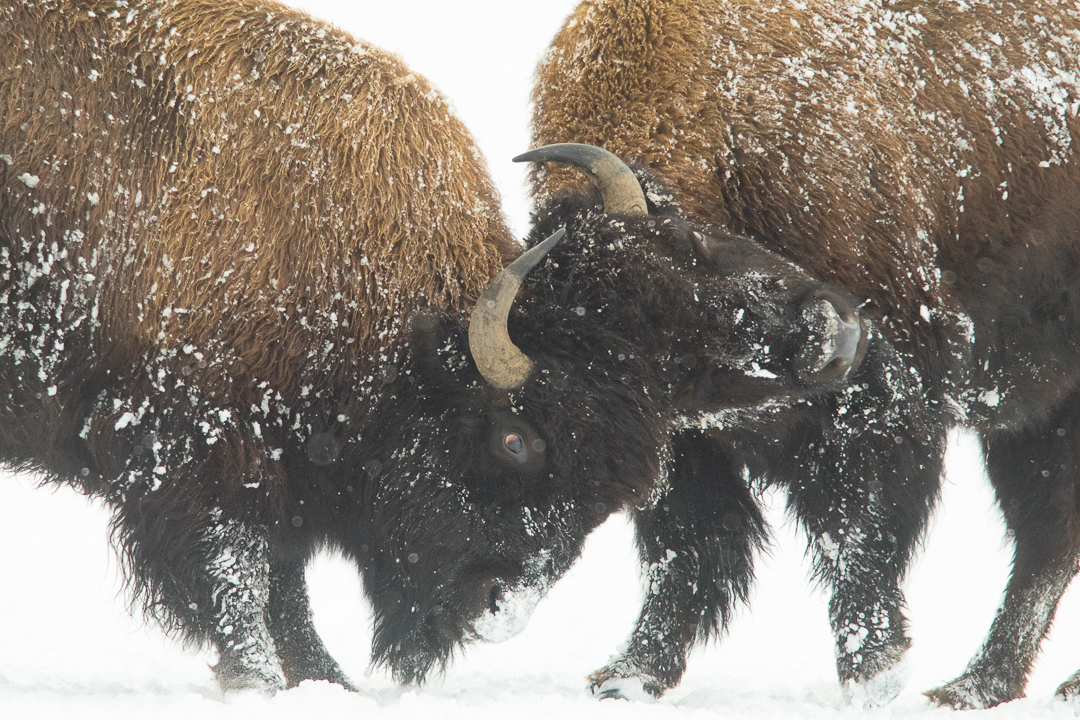 Image Credit: John Slonina
Image Credit: John Slonina
Perhaps the best part of taking your camera to Yellowstone in the winter is the opportunity to photograph tons of wildlife.
For starters, animals stand out against the wintry background, making them easier to spot and photograph.
What's more, the frigid temperatures and heavy snows in the upper elevations force many animals down into the lower valleys in search of food.
It's not uncommon to see giant herds of bison and elk, solitary moose, mule deer, and bighorn sheep. Coyotes, foxes, bobcats, bald eagles, trumpeter swans, and great grey owls are exciting finds as well. If you're lucky, you'll spot a few wolves, too.
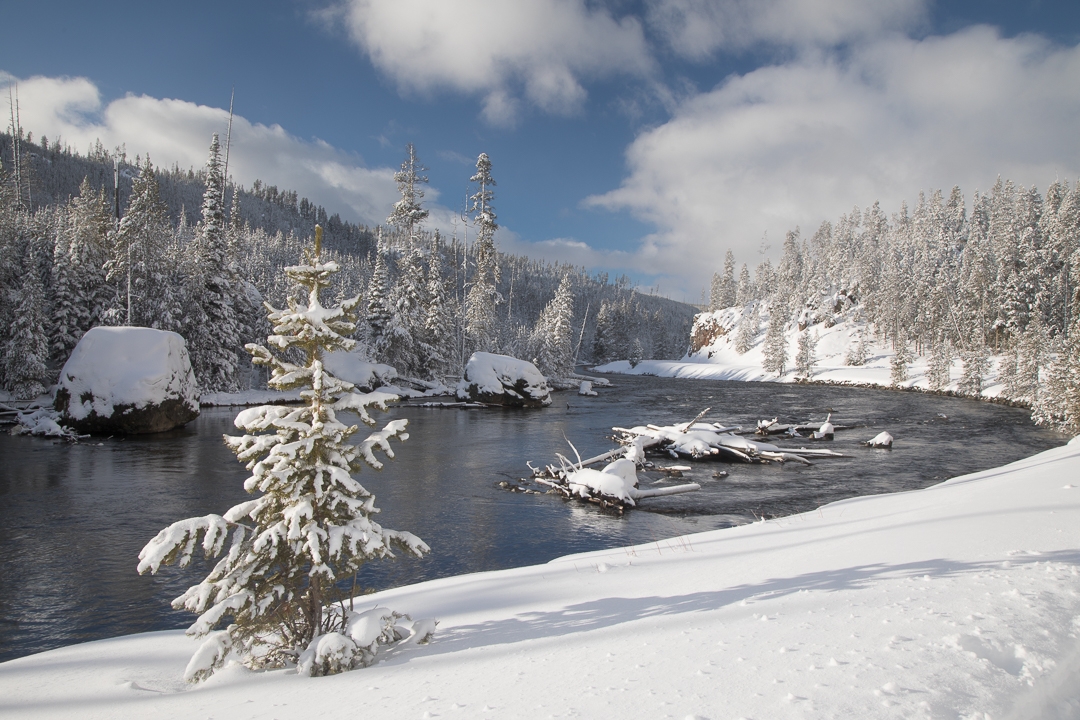 Image Credit: John Slonina
Image Credit: John Slonina
Yellowstone in winter is an unforgiving place, and that necessitates having an experienced guide with you to help you find those magical moments to photograph.
John Slonina is one such expert, having photographed Yellowstone for nearly 20 years.
His 2019 Yellowstone Winter Instructional Photo Tour and Workshop is a must for photographers that want to capture the breathtaking beauty of this area in the winter.
John's workshops blend the incredible sights of the park with instruction on essential photography techniques.
That means you'll get to explore the the park via snowcoach and photograph abundant wildlife and breathtaking landscapes on the one hand, and on the other, you'll learn about things like post-processing techniques using Lightroom.
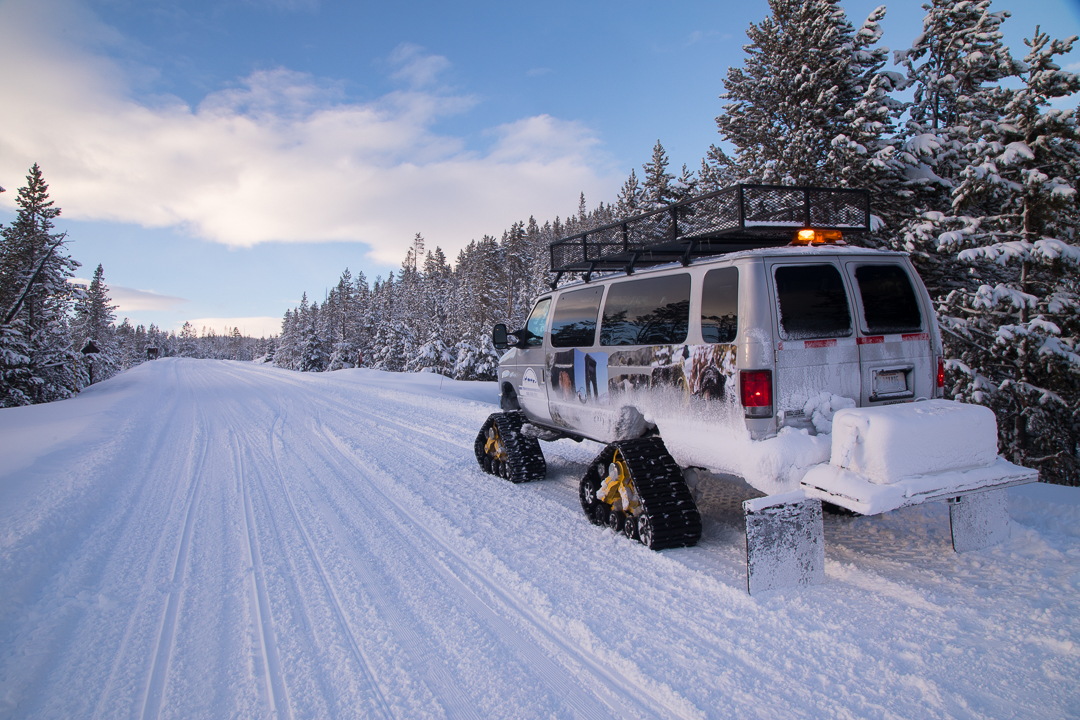 Image Credit: John Slonina
Image Credit: John Slonina
Better still, John's tours are small. That means that you get more one-on-one instruction time to hone your skills.
That also means that the tour uses just one coach, which makes it easier to access more remote areas and see more wildlife from a closer point of view.
In other words, if you're a photography enthusiast that's itching to document the wilds of Yellowstone and asking yourself when to photograph Yellowstone, you need to do so in winter on a tour with John Slonina.
The tour takes place January 11-19, 2019. Visit John's website for more details and to register.
